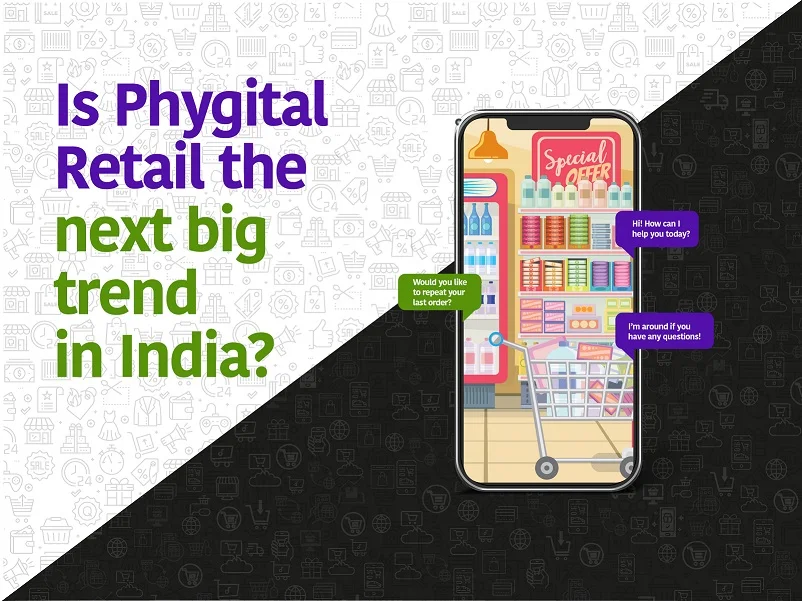- Design industry shaping loyalty programs
- Integrate easily and go live quicker
- Deliver hyper-personalized consumer experiences
Blue Rewards from Al Futtaim Group Shares Loyalty Success Stories and Evolution. Watch Podcast >
Capillary Announces 2nd Annual Captivate 2025 Summit: Transforming Loyalty Management with New AI Tech Read more >

Almost six months into the global coronavirus pandemic and retailers across the globe continue to be severely impacted. Even countries that are no longer under lockdown orders are still witnessing a steep drop in footfall in retail outlets. In a recent webinar organised by Trust for Retailers & Retail Associates of India (TRRAIN), major associations anticipated a 25-30% impact on business, with a multiplier effect on subsidiary industries and lasting job losses. Since the outbreak of COVID-19, retailers are facing challenges around health & safety, supply chain management, labour shortages, consumer demands, disruption in cash flow, and pricing.
Interestingly, the overwhelming opinion from research firms is that global consumer behaviour will evolve due to the coronavirus for the foreseeable future. One reason for this is that new mindsets and habits are being created as life goes on in lockdown-induced quarantine. And for many consumers, the continued fear and apprehension for their health and safety will push them to find innovative new ways to make purchases and create a ‘new normal’.
While consumer demand continues to be volatile, new commerce trends are emerging in countries reporting a slow uptick in the economy; trends like store reopenings with increased social distancing measures, increase in online grocery shopping, social commerce (according to emarketer.com, up to 51% of U.S. adults have been using social media more), live-streaming commerce (most prominently in China and Southeast Asian markets), and other trends. Although it would be difficult for businesses to make accurate long-term strategic decisions during this volatile period, it is imperative for CXOs to revisit current business and operating models in the face of the new normal.
We believe the businesses who emerge as leaders from this crisis will be businesses that adapt swiftly. Capillary has been analysing the impact of Covid-19 on retailers across the globe and evolving our solutions to help retailers quicken their pace towards recovery.
Although online commerce has been on an upward trend in the last decade, the coronavirus pandemic has accelerated the growth of ecommerce like never before. This change can be witnessed across all demographics; even the senior citizen demographic has demonstrated a 195% increase in ecommerce activity from January to March, and there has been a spike of more than 130% in online shopping across all demographics. Consumers are buying products online and picking them up in stores at +500% greater volume than prior to the pandemic, according to research from Kibo Commerce.
However, this leaves us with a big question: are traditional retailers doomed to end up last in the post-COVID-19 world?
We don’t think so; rather this is an incredible opportunity for traditional retailers to pivot to an omnichannel retail strategy. Based on our conversations with traditional retailers in SEA, China & the Middle East, the major resistance to ecommerce adoption centred around initial investment costs, lack of in-house tech experts, implementation timelines and ROI. That’s why we set out to launch Store2Door+– a new module in our Anywhere Commerce suite that: has minimal setup cost, requires zero in-house tech expertise or coding, can go live in less than 7 days and ensures highest ROI through an outcome-linked pricing model.
Here’s how Store2Door+ helps traditional retailers adapt swiftly to the new normal :
Based on results from pilot programs, Store2Door+ contributed 19% of loyalty sales in best performing stores, and 5% on average in remaining stores.
With the rampant rise of Covid-19 cases globally, consumers are plagued by fear of infection. Since physical experiences are no longer possible, ‘no-touch’ or contactless interactions have become the new standard expectation. Various retail leaders are adapting by creating contactless transaction processes. For example, Walmart is testing a store without any cashiers or conveyer belts at checkout lines, with the intent of speeding up checkout times and preventing the spread of coronavirus by limiting human interaction.
Here are some recommendations from Capillary to improve in-store safety, and increase customer confidence:
Companies today are facing major cash-flow shortages. It becomes imperative for brands to strike the right balance in spends across the marketing, sales and service functions, in order to maintain the right customer experience. Although customer engagement, marketing and support become more difficult during economic downturns and turbulent times, they become all the more important to drive strong customer experience, trust, and more revenue in the long-run. In a recent analysis of retail and online brands, Digital Commerce 360 found that brands that pulled back on marketing spend during COVID-19 are now seeing their online sales struggle. Similarly, according to KPMG, it’s even more vital during these unprecedented circumstances for companies to have a single view of the customer, shared by the Marketing, Sales and Service functions, so they can react quickly to their fast-changing needs and expectations.
In these turbulent times, business leaders should align their financial sustainability with the core elements of operational excellence and customer experience. Brands that can pivot and seamlessly adapt their customer experience in these times of crises will certainly come out stronger.

May 20, 2021 | 4 Min Read
The pre-Covid levels of retail revenue in India seem farther

June 30, 2020 | 4 Min Read
Almost six months into the global coronavirus pandemic and r